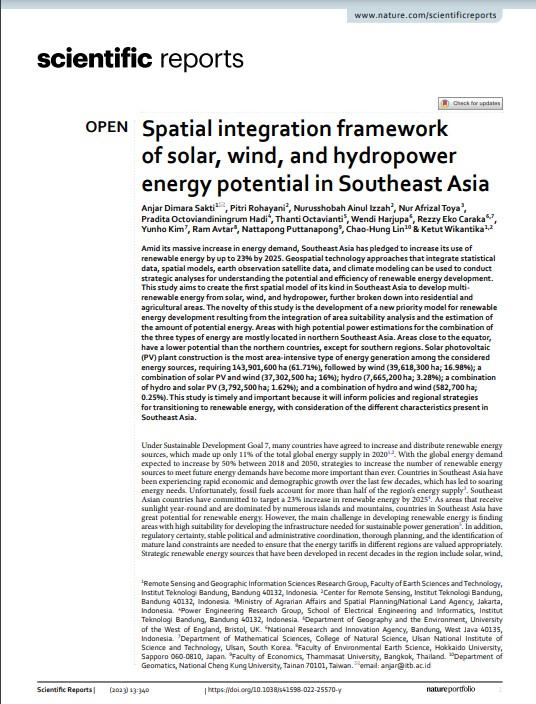
Keyword(s)
Author(s)
1) Anjar Dimara Sakti, 2) Pitri Rohayani, 2) NurusshobahAinul Izzah, 3) NurAfrizalToya, 4) Pradita Octoviandiningrum Hadi, 5) Thanti Octavianti, 6) Wendi Harjupa, 6) 7) Rezzy Eko Caraka, 7) Yunho Kim, 8) Ram Avtar, 9) Nattapong Puttanapong, 10) Chao‑Hung
Country(ies)
Publisher
Published Date
Access
DOI
1) Remote Sensing and Geographic Information Sciences Research Group, Faculty of Earth Sciences and Technology, Institut Teknologi Bandung, Bandung 40132, Indonesia.
2) Center for Remote Sensing, Institut Teknologi Bandung, Bandung 40132, Indonesia.
3) Ministry of Agrarian Afairs and Spatial Planning/National Land Agency, Jakarta, Indonesia.
4) Power Engineering Research Group, School of Electrical Engineering and Informatics, Institut Teknologi Bandung, Bandung 40132, Indonesia.
5) Department of Geography and the Environment, University of the West of England, Bristol, UK.
6) National Research and Innovation Agency, Bandung, West Java 40135, Indonesia.
7) Department of Mathematical Sciences, College of Natural Science, Ulsan National Institute of Science and Technology, Ulsan, South Korea.
8) Faculty of Environmental Earth Science, Hokkaido University, Sapporo 060‑0810, Japan.
9) Faculty of Economics, Thammasat University, Bangkok, Thailand.
10) Department of Geomatics, National Cheng Kung University, Tainan 70101, Taiwan.